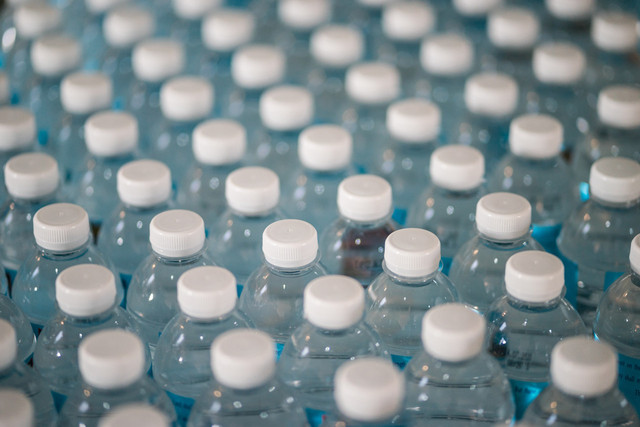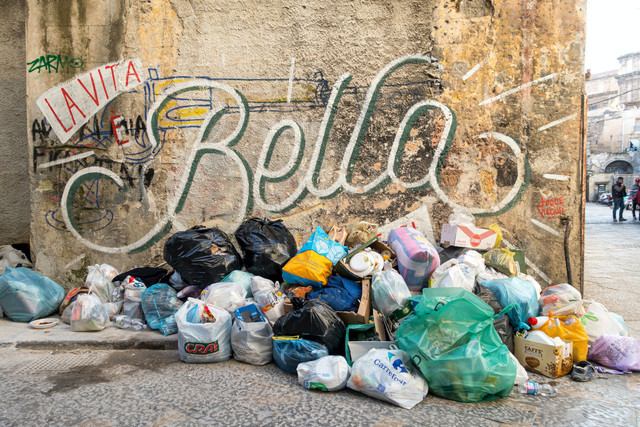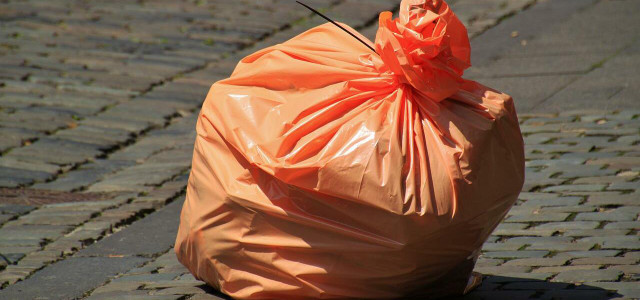rPET, or recycled PET, is a plastic made entirely from recycled products like water bottles. We’ll take a closer look at the benefits and drawbacks of rPET plastic here.
The problems associated with our growing plastic consumption, which increased by almost five million tons over the last 10 years in the US alone, are diverse and well-known. Its production is bad for our health and the environment. Clinical studies have found traces of plastic in eight out of 10 babies, with no consensus on the dangers this poses. And eight percent of the world’s oil use goes, whether directly or indirectly, to make plastics.
Plastic takes decades, centuries or millennia to degrade. However, some plastics are arguably better than others. If we choose recycled plastics like rPET over more harmful ones, like black plastics, we will genuinely be contributing to protecting our environment. But rPET materials are a partial solution to an enormous problem, not a quantum leap in sustainability.
What Is PET?

You’ve likely heard of PET, but you might not recognize it by its full name: polyethylene terephthalate. PET is the most common plastic on Earth. We use it to make everything from plastic bottles to polyester clothing. And our consumption of it is breathtaking.
There are many environmental drawbacks to PET. Like most common plastics, the raw materials for PET — and thus rPET — are crude oil and natural gas. As we all know, these resources are not unlimited. Even the manufacture of fossil fuel-derived products is extremely environmentally harmful, with high levels of greenhouse gas emissions and significant water consumption. Fortunately, when properly recycled, PET can be converted into rPET and reused relatively sustainably.
You might also enjoy: Reusing Plastic Water Bottles: How to Do It Safely
What Are the Benefits of rPET?



The very properties that make PET so useful, its flexibility and responsiveness to heat, also make recycling it easier. If cleaned and sorted properly, PET products can often be returned to the material’s original form. Consequently, the most common uses for rPET are drinking bottles, often made using a mix of recycled and new PET, and polyester garments.
In many cases, rPET can be recycled in turn. But it can’t be recycled indefinitely. Each time plastic is heated, it degenerates and must be used to make lower-quality products. Manufacturers often add chemicals to help change the viscosity of the old plastic.
As well as not depleting the planet’s ever-dwindling fossil resources to make the rPET material itself, the production of rPET plastic may also consume considerably less energy than new PET. A study suggests that recycled PET bottles may reduce greenhouse gas emissions and fossil fuel consumption by 13 to 56 percent. rPET makes the best use of plastic already in circulation.
But even rPET still has to go somewhere eventually. In the best case, it ends up in a landfill or the incinerator — worst case, the ocean.
Is rPET Better Than Regular Plastic?
It’s clear that rPET at least represents a more sustainable alternative to standard PET. But, and this is a big but, a lot of the information on rPET seems to be provided by the plastic producers themselves. Of course, any genuine attempt to deal with our plastic problem on a profitable, commercial scale is worthy of attention. But we have to be wary of greenwashing, too.
Relying on rPET won’t solve the many downsides to our use of plastics. It’s just as capable of leaching microplastics into our water as other materials. And we shouldn’t forget how limited our recycling capacities are in the first place.
rPET is a viable, functional alternative to single-use plastic. To help the planet, always look out for recycled products, and find out how to recycle effectively at home. (You’ll find lots of helpful advice on the EPA website.) The bottom line is that reusability, repairability and biodegradability should be our watchwords as consumers. As always, using less is more, and conscious consumerism is best.
** Links to retailers marked with ** or underlined orange are partially partner links: If you buy here, you actively support Utopia.org, because we will receive a small part of the sales proceeds. More info.Do you like this post?








